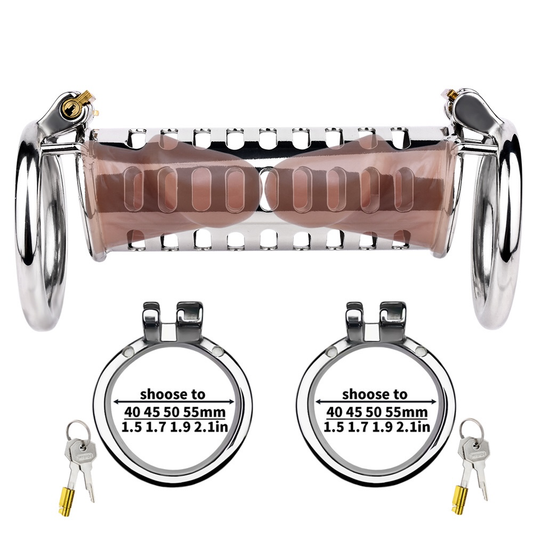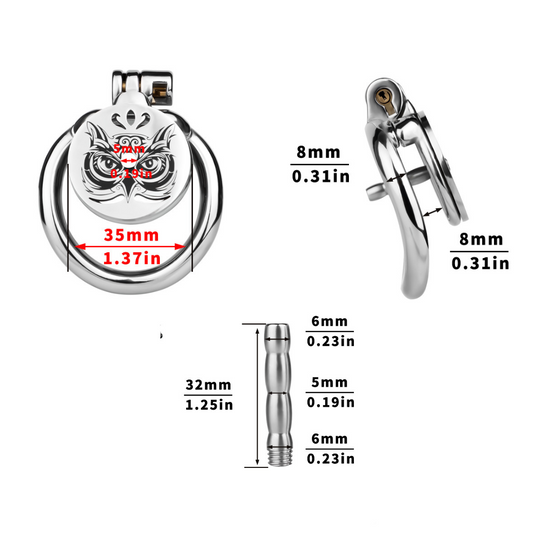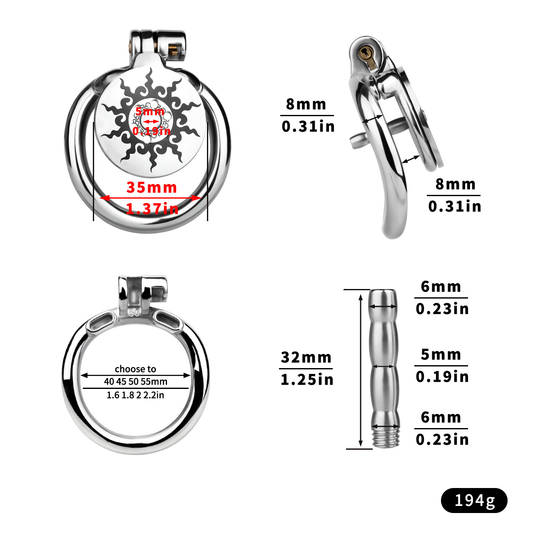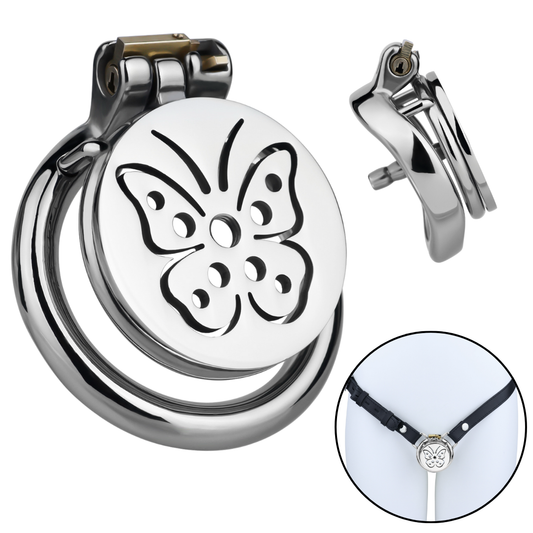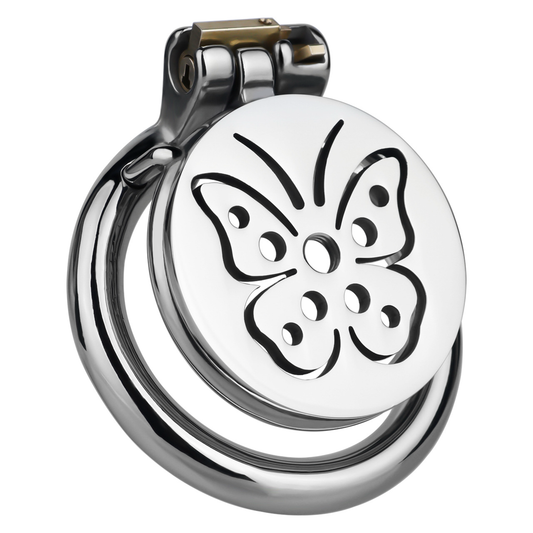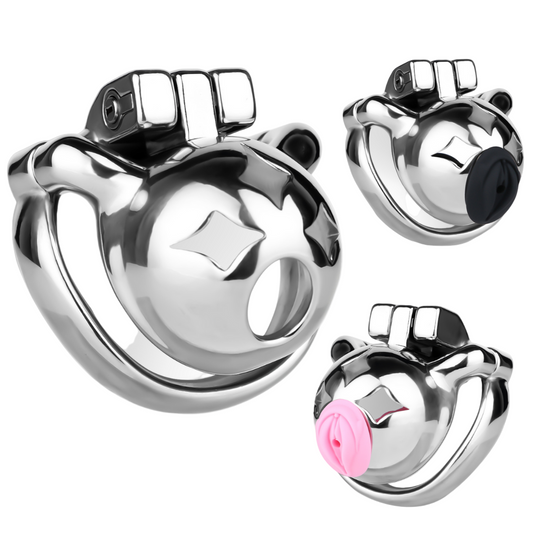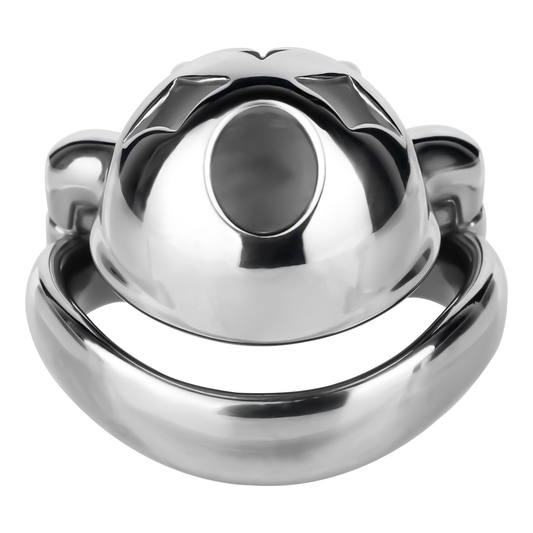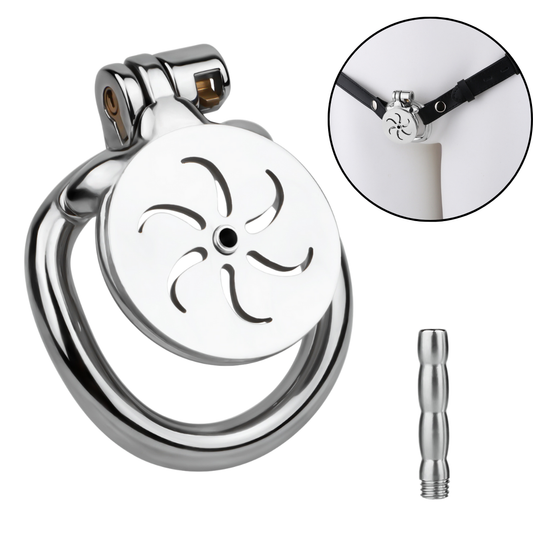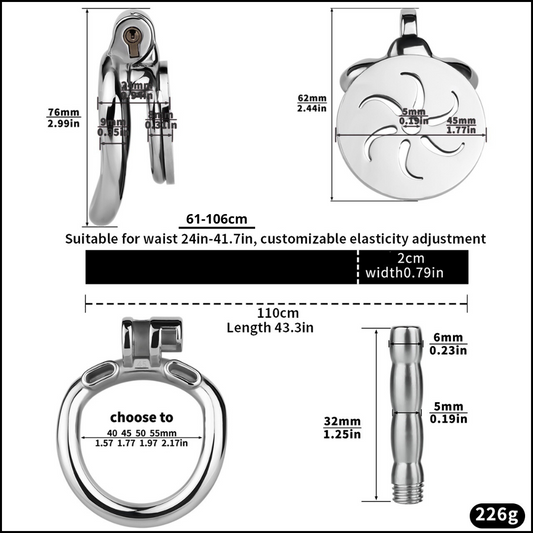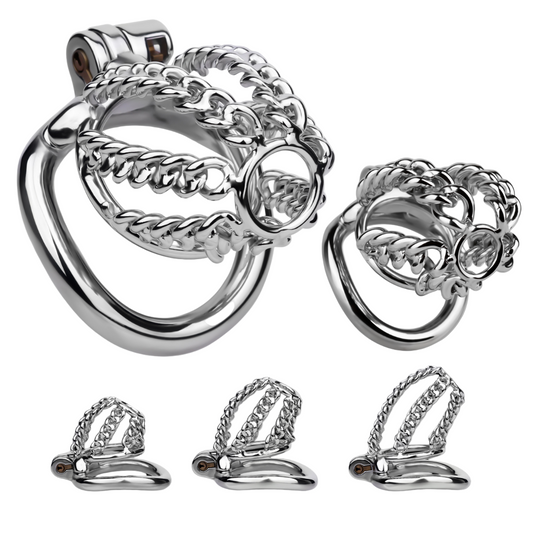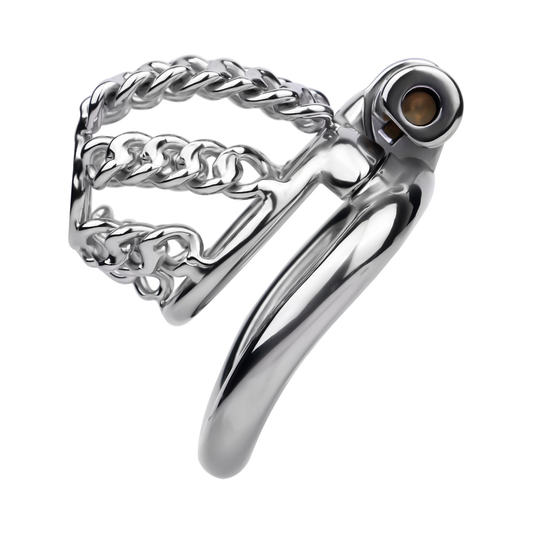Chastity Keyholder Guide: Controlling Your Sub with Chastity Devices
Share
BDSM is a realm of exploration, where power dynamics and intimacy intertwine to create unique and fulfilling experiences for all involved. Among the diverse practices in BDSM, chastity play stands out as a tantalizing journey of control and submission. In this guide, we will delve into the world of being a chastity keyholder and provide you with valuable insights and tips to master the art of controlling your submissive partner using chastity cages and chastity belts.
Open Channels of Communication
Before you embark on the journey of chastity play, it's crucial to establish open and honest communication with your submissive partner. Both of you should discuss your desires, boundaries, and expectations openly. This forms the foundation of trust and ensures that both parties are fully aligned in their desires and limits.
Understand the Dynamics of Chastity Devices
Chastity devices come in two main forms: chastity cages and chastity belts. A chastity cage is designed for male anatomy and encompasses the penis to prevent erections and masturbation. On the other hand, a chastity belt, often more intricate, encases the entire pelvic area and is designed for female anatomy. Understanding the differences between these devices helps you choose the most suitable option for your submissive's comfort and the dynamics you wish to explore.
Selecting the Right Device
When choosing a chastity device, comfort and safety are paramount. Research the available options together, considering factors like material, size, and hygiene. Ensuring a proper fit is essential to prevent discomfort or injury. It's a good idea to involve your submissive in this process, as their comfort and consent should always be prioritized.
Gradual Introduction
Chastity play is a journey that requires patience and gradual exploration. Start with shorter periods of time locked in the chastity device and gradually increase the duration as both you and your submissive become more comfortable with the experience. This allows your partner to adjust physically and emotionally, preventing any potential discomfort.
Teasing and Denial
Chastity play often revolves around teasing and denial, building anticipation and desire. As the keyholder, you can send teasing messages, engage in sensual activities, or even incorporate tasks that keep your submissive longing for release. However, always ensure that the teasing is consensual and enjoyable for both parties.
Regular Check-Ins
Maintain a consistent line of communication by scheduling regular check-ins. These sessions provide a platform for both you and your submissive to share feelings, discuss concerns, and make any necessary adjustments to the arrangement. Open and honest communication fosters trust and helps create a more satisfying experience for both parties.
Safewords and Consent
While the power exchange is an integral part of chastity play, consent and safety should never be compromised. Establish safewords that your submissive can use to signal discomfort or the need to stop the play. Always prioritize their well-being and be prepared to release them from the device if necessary.
Post-Play Aftercare
After a chastity play session, engage in aftercare. This includes physical care such as removing the device gently and ensuring comfort. Additionally, provide emotional support and reassurance to your submissive. Aftercare helps transition both of you back to a state of emotional equilibrium and reinforces the connection between you.
Being a chastity keyholder is a journey of trust, exploration, and control. Utilizing chastity cages and chastity belts, you can create unique and intimate experiences that are both thrilling and rewarding for you and your submissive partner. By prioritizing open communication, consent, and safety, you can embark on a journey that strengthens your bond and takes both of you to new heights of pleasure and connection. Remember, every BDSM dynamic is unique, so adapt these tips to suit your specific relationship and always prioritize the well-being and consent of all parties involved.













